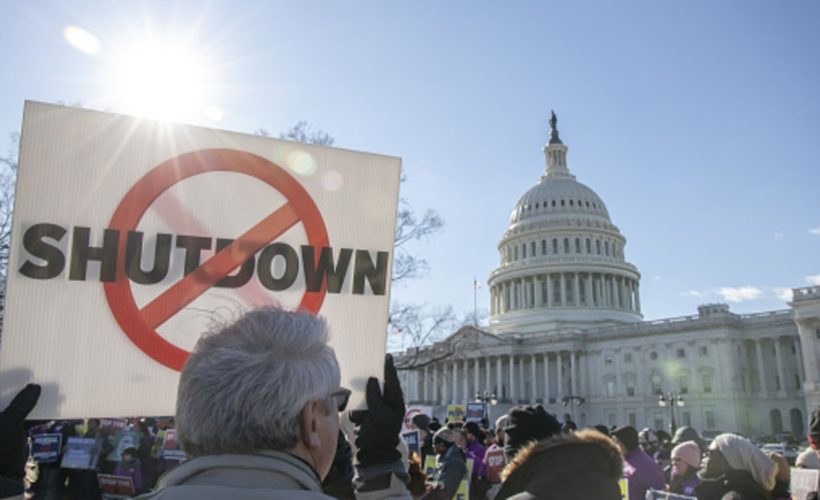The partial government shutdown has come to an end. Yet for small-business owners who are waiting on loans, the clock is still ticking.
The Consumer Bankers Association pegged the tally of outstanding loans at about 300 for each day of the shutdown, or about $2 billion in lending, according to a letter it sent to President Donald Trump and Congressional leaders Jan. 22. The partial shutdown began on Dec. 22.
The SBA works to with lenders to process and guarantee funding for small businesses. The agency does not loan money directly. It does, however, set guidelines for loans with the aim of reducing risk for lenders and making capital more available to small businesses. The SBA did not respond to a request for comment.
“Small business is going to be the first place you’re going to see the impact of the shutdown, because a lot of these loans stop as soon as the shutdown occurs,” said David Pommerehn, associate general counsel and senior vice president at the Consumer Bankers Association.
Lawmakers agreed on Jan. 25 to keep the government open for three weeks, or until Feb. 15.
That is little comfort to small-business owners who are still waiting to get checks in their hands.
That includes Carlos Chavira, who owns a Dedham, Massachusetts, restaurant named Pancho’s Taqueria with his sister, Nohely. Together, they opened their first location several years ago.
Last year, they signed a lease for a second restaurant in nearby Needham.
However, they still need funding in order to open that new location. And while the six-figure sum they were seeking has been pre-approved by a bank, they are still waiting on the SBA.
That has Chavira nervous about the upcoming Feb. 15 deadline.
“Hopefully, we get approved by then and we don’t have to wait a little longer,” Chavira said.
If you own a small business and are facing a shutdown-related shortfall — either because of a wait for loans or because of lost business — financial experts say there are some key considerations to keep in mind.
“For a small-business owner, liquidity is key,” said Greg Ghodsi, managing director of 360 Wealth Management, a division of Raymond James. “When liquidity dries up, it makes operating the business on a day-to-day basis next to impossible.”
Many banks continued to process SBA loans through the shutdown, though final approval from the SBA had to wait. Bank of America is one of those institutions.
“Is it frustrating for the borrower? Yes, it is, but we’ve been able to work with all of our borrowers,” said Chris Ward, small-business lending executive at Bank of America.
The bank has continued with its other lending activities, such as unsecured lines of credit, term loans, equipment loans and small-business cards, Ward said.
Last year, Bank of America completed about $8.6 billion in new small-business loans; about $400 million of that was SBA-related lending.
One thing for small-business owners to watch: That any traditional business loans they take do not conflict with their plans to pursue SBA loans, according to the Consumer Bankers Association. Check to see if there is a “credit elsewhere” requirement in the SBA loan program that could prohibit you from taking traditional loans or temporary bridge loans.
Small-businesses owners who want access to capital may turn to non-bank lending.
If you decide to go that route, you should be extra-cautious about the lender you choose and go over the terms and disclosures carefully, said Joyce Klein, director of FIELD at the Economic Opportunities Program at the Aspen Institute.
There are a range of products you can access online, from installment loans to lines of credit. And their terms may require daily payments through your bank account or take a certain percentage of merchant transactions.
More from Personal Finance:
A key tax deduction for telecommuters is gone. Here are options for easing the pain
More than 8,000 investors were misled by this $1.2B Ponzi scheme. Here’s how to spot a fraud
Cancer patient was denied student loan relief, despite being eligible
“You have to be very careful,” Klein said. “It can be not easy to understand how the pricing of the capital, the payment structure of the capital, the prepayment requirements of the capital, relate to your cash flow and financing needs.”
You may also face high financing charges, even if you pay off the loan ahead of schedule.
The risks of non-bank lending prompted the Aspen Institute and certain lending organizations to form a Small Business Borrowers’ Bill of Rights. The document lays out the rights borrowers should have and a set of practice standards for lenders and brokers. It also includes a list participating financial institutions.
Source:CNBC





